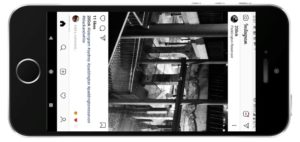Content does not restrict its view and operation to a single display orientation, such as portrait or landscape, unless a specific display orientation is essential.
Note
Examples where a particular display orientation may be essential are a bank check, a piano application, slides for a projector or television, or virtual reality content where content is not necessarily restricted to landscape or portrait display orientation.
About Success Criterion 1.3.4: Orientation
 Mobile content should be usable in any orientation. In some cases, the mobile device can be affixed, set to a specific orientation and cannot be rotated by the user. For example, a user with a wheelchair could have their mobile stuck in one particular orientation and be unable to change it.
Mobile content should be usable in any orientation. In some cases, the mobile device can be affixed, set to a specific orientation and cannot be rotated by the user. For example, a user with a wheelchair could have their mobile stuck in one particular orientation and be unable to change it.
This success criterion does not just require that your system work in both portrait and landscape but it also means you can’t lock your system into one orientation. The mobile accessibility guidelines also require that you don’t swap orientation unexpectedly.
An example of a failure is Instagram – initially, it only functioned in portrait mode and not landscape.

Resources
- Mobile Site and Native App Accessibility Testing Guidelines (look for Requirement 3.8: Orientation in the Test Cases documents)
- Mobile Accessibility Testing Guidelines Webinar